Generally, I'm not of the opinion that Pulitzer is worth paying a whole lot of attention to anymore. Any credibility he might have had was flushed away along with the decisive demonstration that his "100 percent confirmed Roman sword," which he claimed would change the history of the world, was simply a 19th or 20th century piece of tourist junk. He was easily fooled by it and continues to stick with his original claim to this day, despite a mountain of evidence that clearly shows his claim is wrong. His inability to accept (or perhaps even understand) contrary facts is fundamentally incompatible with the most basic tenets of science. I have yet to see any evidence that he even understands what "science" is, let alone that he is capable of practicing it.
Pulitzer's well-established silliness is not what is important to me in this case: it's that his silliness leaves us with a a lack of clarity about what the pair are actually planning on doing. To me the significant issue is what appears to be a plan by the pair to go beyond rhetoric and start messing with the actual archaeological record. Their latest audio discussion of a past episode of America Unearthed, the subject of Colavito's blog post, features them discussing what sounds like an excavation they plan to undertake with the intent of finding and unearthing what they believe to be gigantic human remains but without involving the authorities in the traditional way (listen between about 16:00 and 24:00). Pulitzer and Wolter first discuss an image, sent to them by a third party, of what they have determined to their satisfaction is a very large human bone. They say the following, among other things:
16:30 Pulitzer: "With any researcher or explorer, the only thing that confirms it is when you, yourself, your team, your documentation team can physically take them out of the ground yourself, and can document it themselves. And that's what's been missing is a lot of these have been found by people, but when they feel they're doing the right thing and calling the local authorities and state archaeologist and some of these others get involved, literally everything disappears."
18:15 Wolter: "This is not in your typical situation, where archaeologists have control of the site. There is, this is a site that is completely unknown, it has not been studied in any specific detail. [... ]This opportunity is once in a lifetime, we are going to seize that opportunity."
23:00 Wolter: "Believe me, if that bone turns out to be as big as it was, and the rest of the bones turn out to be as big, if they match this then we'll have something big to report."
The original brouhaha about Colivito's blog post concerned his use of the phrase "announce plans to rob presumed Native American grave" in his headline describing what Wolter and Pulitzer planned to do. Pulitzer accused Colavito of libel for using the term "rob" (which he argued implied a criminal act) and Colavito subsequently changed the language to read "dig up." Objectively, "rob" was a poor choice of word and I think Colavito did the correct thing by making a change. His quick word change amicably resolved the issue and we all rode off on on our rainbow-colored unicorns, satisfied that the world was populated by reasonable people. The end.
Oh no, wait, that didn't happen. My bad.
What did happen was that Pulitzer commented many, many more times after the word change, responding to challenges and questions about their plans by creating the crazy quilt of conflicting questions and explanations which you just have to read for yourself to fully appreciate. Nothing squares with anything else -- it's just a big mess that leaves the impression that there really is no plan. In their audio presentation, Wolter and Pulitzer clearly stated they think they're dealing with giant human remains (or else what would be the point of excavating them?), and I think any reasonable person would conclude, based on what they said, that they intend to dig up those remains. In the audio, they told us that professional archaeologists and "local authorities" are the problem, and they are going to "seize the opportunity" of a situation where they can "physically take [the bones] out of the ground" themselves. In his comments, however, Pulitzer appeared to walk that position backward several steps (albeit in a confusing zig-zag), disingenuously asking many others who commented where they possibly could have gotten the idea that he and Wolter were going to dig up human remains themselves. I'll tell you where: from what you said! I fail to see how a reasonable person would draw any other conclusion from the audio.
But maybe all of us somehow got it wrong? Fine -- then tell us what the plan is. I (and others) repeatedly asked Pulitzer to clarify what exactly he was talking about in terms of what he and Wolter intended to do. Eventually we got this response:
"Andy, for your information. The photos show what could easily be a human bone, but the size of it caused the local sheriff to poo poo it. Was too big. Thus case closed. Path open, thus why we are bringing in our own research and medical team. Cant force the locals to deal with now can you. All bases covered."
I responded:
"Ah . . . So now we have learned something. You and Wolter satisfied yourselves (based on a photo) that it is a human bone, but the local authorities satisfied themselves that it isn't. Therefore you argue that you have a green light to do whatever you want? Is that accurate? Perhaps if this photo is so convincing you should let the world see it. I would be willing to bet you were not looking at a genuine photo of a giant human bone. You did, after all, identify brass on your "Roman sword" as gold."
And that is where the conversation effectively ended. I am left still not knowing exactly what Pulitzer and Wolter intend to do. The cowboy tone of their audio conversation and Pulitzer's unwillingness to provide a simple answer to the "what exactly are you planning on doing" question is troubling to those of us who care about stewardship of archaeological remains. We don't know where this "site" is, and we haven't been shown the images of the object that Wolter and Pulitzer have decided is a human bone. We do know, however, that they think they are dealing with human remains and they apparently suppose they are working within the letter of the law but somehow in a way that will allow them to act as "warriors for truth" outside of customary or established procedures. Yes, I'm using the word "act" intentionally. I'm concerned that Wolter and Pulitzer's cavalier conspiracy-theory-laden discussion will encourage others to go out and become "warriors for truth" armed, this time, with shovels to accompany the sense of outraged entitlement that Pulitzer attempts to instill in them.
My bet (and my hope) is that these guys give up on this idea, whatever the hell it actually is, and leave the physical archaeological record to professionals. This is not because we want to suppress the truth about anything, but because doing good archaeology in the field requires a skill set that takes years to develop and hone. It requires much more than TreasureForce costumes and empty rants about "forbidden history." As it turns out, technology patents, lawyers, and authorship of copy-paste treasure hunting books are of little utility when trying to read and interpret subtle variations in sediments and deciding how to pick apart overlapping features so you understand what you're looking at. In short: you guys don't know what you're doing. You can talk all you want, but when it comes to archaeological fieldwork you haven't demonstrated that you're qualified to stick a single shovel in the ground. You may have been on TV, you may have a lot of fancy toys, and you may have an A-Team van and an official Red Ryder, carbine action, two-hundred shot range model air rifle with a compass in the stock, but I'd be willing to bet that you couldn't out-perform a single one of my field school students in your knowledge of basic excavation methods.
Rant all you want about your "Roman swords" and your "fight for truth," but please leave the excavating to those of us who understand where show business stops and scientific work begins. And please leave human remains alone. These are the remains of people, not props to be used to try to build an audience for your tragicomic attempt at "rewriting history."
One simple step here would be to show the photo of the alleged "giant human bone" to someone who is qualified to make a credible, indpendent judgement about whether or not it could be human. You're completely wrong if you think it's always a simple task to determine what's human and what's not -- there are numerous examples of highly educated people making mistakes in the past, and well-meaning people in law enforcement and medicine continue to make mistakes today because they are not trained in comparative anatomy. What you need is someone who understands both human and animal anatomy and is familiar with archaeological materials. I suggest you send the image to me. If I can't figure out what I'm looking at, I'll find someone who can. That's a sincere offer. I'll give you an honest opinion, and I won't publish the image without your permission. If I think what I'm looking at is human, I will advise you to revisit the issue with the local law enforcement officials that you claim to have already dealt with. This is the point at which the responsible thing to do is to check the bravado and offer some transparency.
I have more to say about this, but I'm on the road again and my time is limited. I'll just say that my sincere hope is that what sounds like a "let's go dig something up" plan, in whatever form we're now supposed to think it will be operationalized, is piled on the scrap heap with Pulitzer's other unfulfilled promises (remember the "smoking gun" Minoan artifacts of Tennessee? remember the "Indiana mummy"? remember the "white paper" that was promised in spring 2016?).
Finally, I'd like to close by saying something positive about Scott Wolter. Despite our recent issues connected to his withdraw from participation in my class and my disappointment that Pulitzer is apparently now speaking for Wolter, I continue to believe that Wolter and Pulitzer are fundamentally different. The contrast comes through clearly in the audio conversation that is the subject of this post (the only one of their America Unearthed reviews that I've listened to so far). Wolter is articulate and has a command of the issues that easily exceeds anything I've ever heard from Pulitzer. Their partnership is none of my business, of course, but I continue to wonder why Wolter would choose to make his equal someone who so clearly is not. I remain puzzled by the mismatch.
I welcome any comments by Pulitzer or Wolter that will help clarify what is going on here: I'm genuinely unsure. I'll delete any comments that I deem unconstructive.
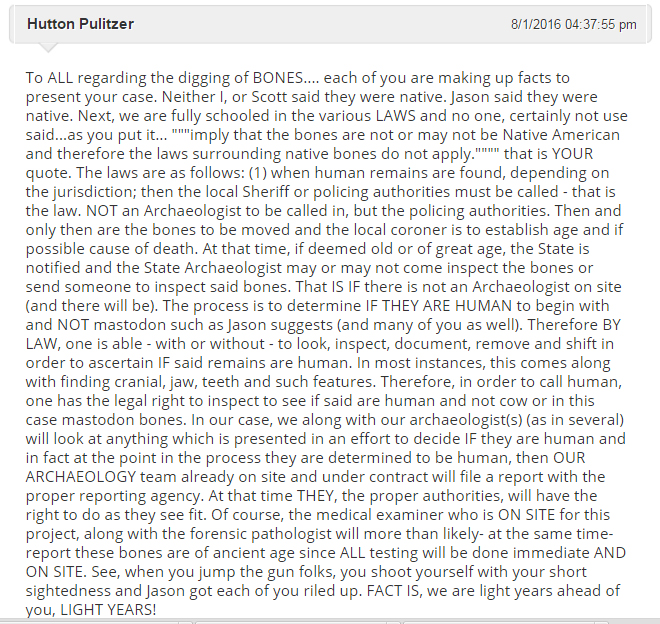
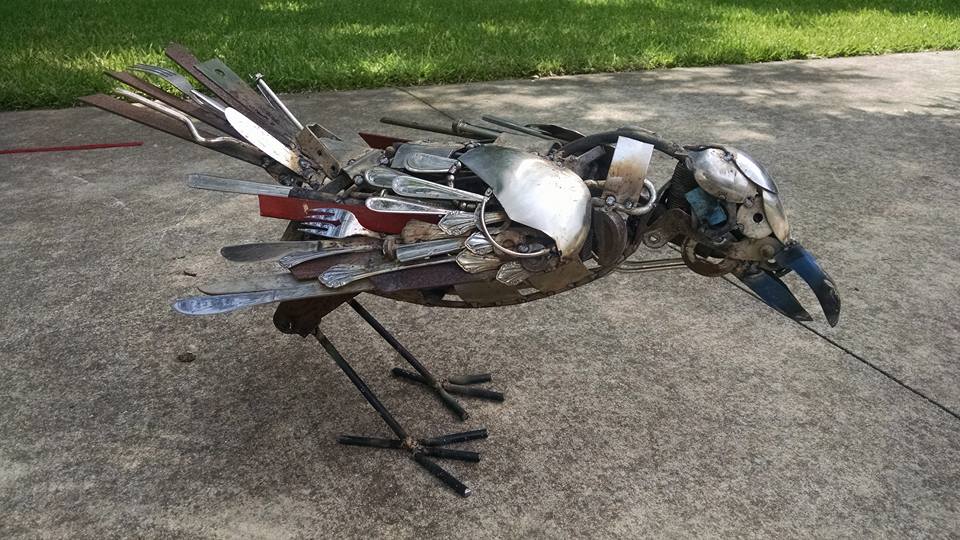
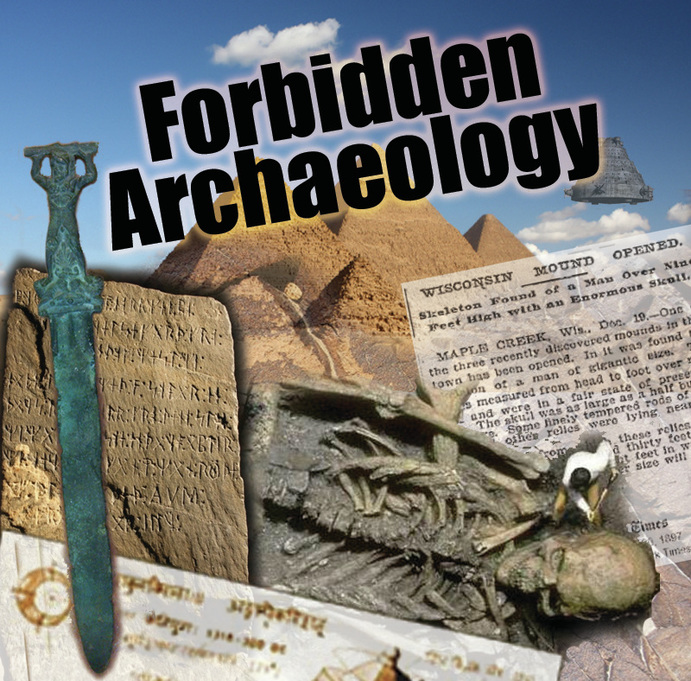
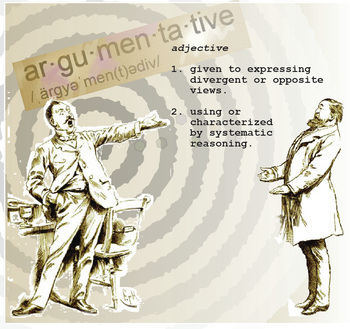
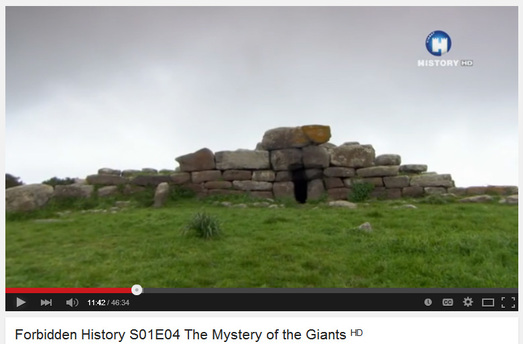
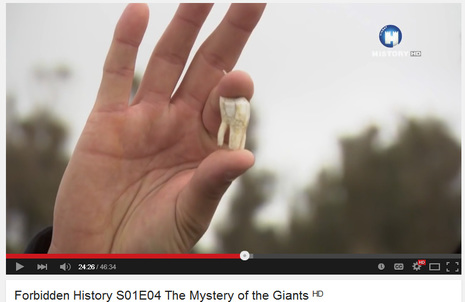
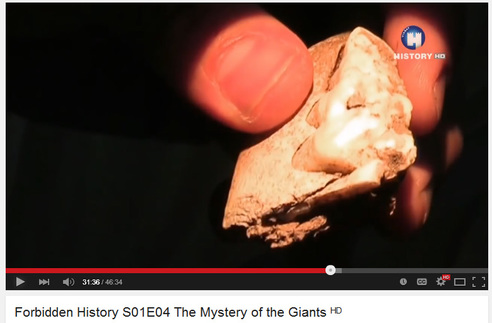
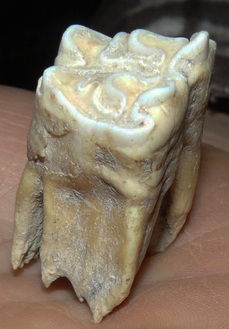
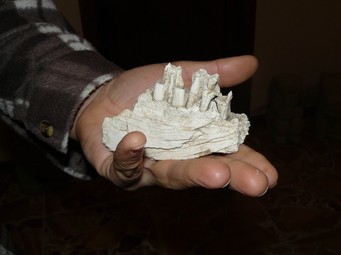


 RSS Feed
RSS Feed
